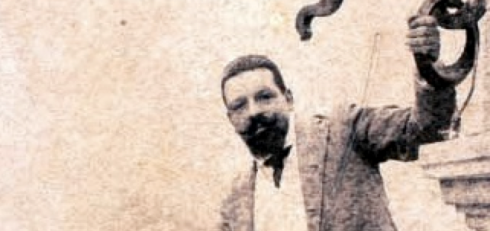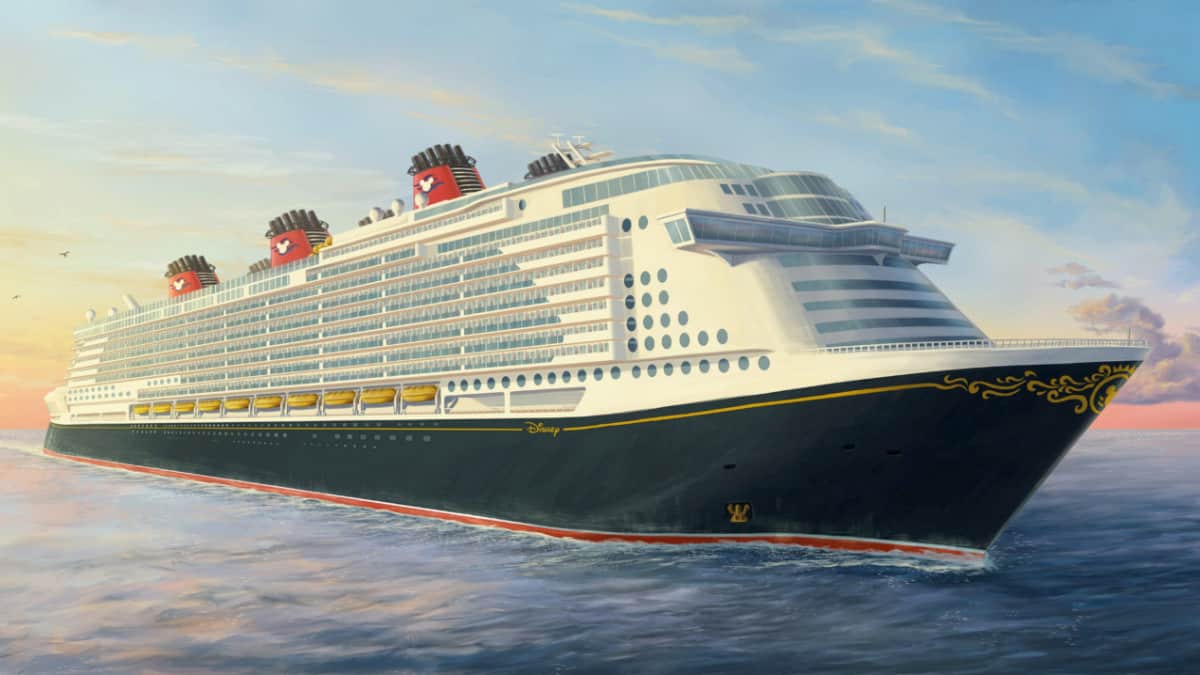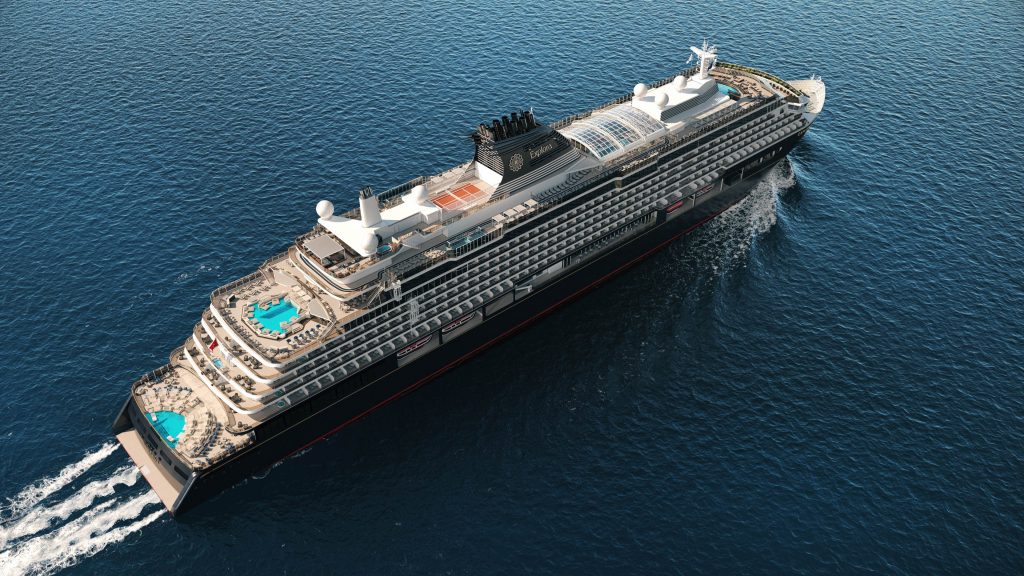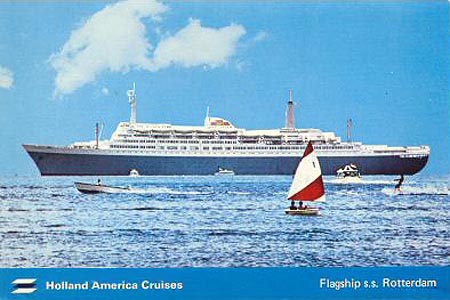Designers of the last of the “old-fashioned” over the top baroque passenger ship interiors
The most famous of the Coppedè brothers, Luigi “Gino” Coppedè (1866 – 1927) was an Italian architect, sculpter and decorator, born in Florence. He was an exponent of the Art Nouveau movement and worked in his father’s woodcarving studio between 1885 and 1890 where he met various influential Tuscan architects. His first important work was the Mackenzie Castle in Genoa in 1890, commissioned by Evan Mackenzie, a Genovese banker. It was a great succes.
In 1891 he entered the Accademia di Belle Arti di Firenze where he became professor of architectural design. Several academic organizations granted him honorary degrees.
Starting in 1917, Coppedè worked in Rome on a series of buildings in the Art Nouveau style, They would later be referred to as the Quartiere Coppedè (Coppedè Quarter). That same year he became a professor of General Architecture at the University of Pisa.

Gino and his two brothers Adolfo and Carlo designed the interiors and and furnishings of several ships owned by the Lloyd Sabaudo and Cosulich Triestina Navigation Company (see below for more details).
After the death of his father, Gino, along with his brother Adolfo, took over his father’s studio “The House Artistica”. It was later also called Studio Coppedè.
Between 1920 and 1921 he was involved in a project to move the main railway station of Rome, followed by designing the famous villa La Gaeta at Lake Como together with his brother Adolfo in 1921. One of his final projects took place in 1924 when he started with the construction of the the palatial residence of the Marquess of Motilla in Seville.
In 1926 he was appointed professor emeritus at the Academy of Fine Arts, Florence.
Gino Coppedè died in Rome September 1927 because of complications following surgery.
Together forming Studio Coppedè, Gino often worked together with his brothers Adolfo (1871 – 1951) who was also an architect and Carlo (1868 – 1956), a painter.
Ocean liner interior design by the Coppedè brothers.

It all started with theLloyd Sabaudo ships Tomaso di Savoia which entered service in November 1907 and her sister, Principe di Udine, following in March 1908. Both ships sailed on the South American route. 1200 emigrants were accommodated in third class dormitories while aft in the ship second class cabins were situated for 106 passengers. First Class staterooms could be found midships. Their first class public rooms, including a smoking room, a ladies lounge, a music room, winter garden and a lavishly decorated dining room all were designed by the Coppedè brothers from Florence.
The twins Conte Rosso (1922) and Conte Verde (1923) also of Lloyd Sabaudo followed, They featured unique interiors thanks to the furniture supplied by the Coppedè brothers who were inspired by the feats of Amadeus VI of Savoy, also known as the Red Count, and those of his son Amadeus VII, also called the Green Count.
The third Count, the Conte Biancamano (1925), rendered homage to Umberto I, count of Moriana, who was called Biancamano due to the whiteness of his hands. Part of her forward superstructure arrived at the Leonardo da Vinci Science Museum in 1961, sliced up into sections, transported by rail from La Spezia where the old steamer was dismantled. For efficiency reasons, saving time and money, the fourth count, the Conte Grande (1928) was built as a copy of the Conte Biancamano, thus completing the fleet of the four Counts.

The décor of all four Counts was entirely designed and realised by the Coppedè brothers in their characteristically exuberant style.
It is said that the Conte Biancamano was their best creation. But although she was still an example of their typical over the top designs, she was clearly less bombastic than her fleetmates. Highlight onboard was her colonnaded first class ballroom, with its impressive floral pattern Persian rug.
The Coppedès also worked on Cosulich Line’s Saturnia (1925) and VuLcania (1926). Despite her modern exterior, Vulcania, like most Italian liners of the period, was designed with excessively ornate period interiors. These were, as usual, realised by the Studio Coppedè, famous for creating extravagant Baroque, Rococo, Pompeian and Tudor inspired interiors. Excessive decorations consisted of carved wood, stained glass, friezes, murals and mirrors in gilded frames.
Her sister Saturnia was fitted with an equally bombastic interior. But despite these being elaborately celebrated in the ship’s inaugural book, they also turned out to be her weak point being outmoded from the start. In less than a decade the baroque ballroom as well as most other lounges were refurbished in a more contemporary style by interior architect Gustavo Pulitzer despite the fact that when originally built, coordinating architect Arduino Berlam from Trieste had been specifically told interior spaces like her main ballroom had to be designed as “magnificent and lordly as the palace of the Sun King in Versailles”. The Coppedè brothers were responsible for furnishing the a la carte restaurant and the indoor swimming pool which they did in their trademark extravagant rococo style when Saturnia was originally built.

By the way, several original lounges on Vulcania and Saturnia had been realised by the Trieste based design studio STUARD, of which one of the founders was Gustavo Pulitzer Finali. It was his first major ocean liner interior design project. Less than a decade later in 1936, he was in charge of the refurbishment of the most representative lounges of both sister ships in a much more contemporary style
When the Lloyd Sabaudo ordered the superliner Conte di Savoia in 1932 they were exceptionally brave when, with the succes of the liner Victoria (1930) of Lloyd Triestino in mind, they wanted her also to be fitted with strikingly modern interiors. So they hired the same designers, Pulitzer and the German architects Michael Rachlis and Georg Manner. However there designs were so modern that the the directors of the company got cold feet. To tone down their daring design they turned to Adolfo Coppedè to redesign her ballroom in a most classic and ornate baroque style. This was a strange change in te overall design of such a futuristic ship, which proved to be more popular with travellers than Italy’s other superliner of the thirties, the Rex.
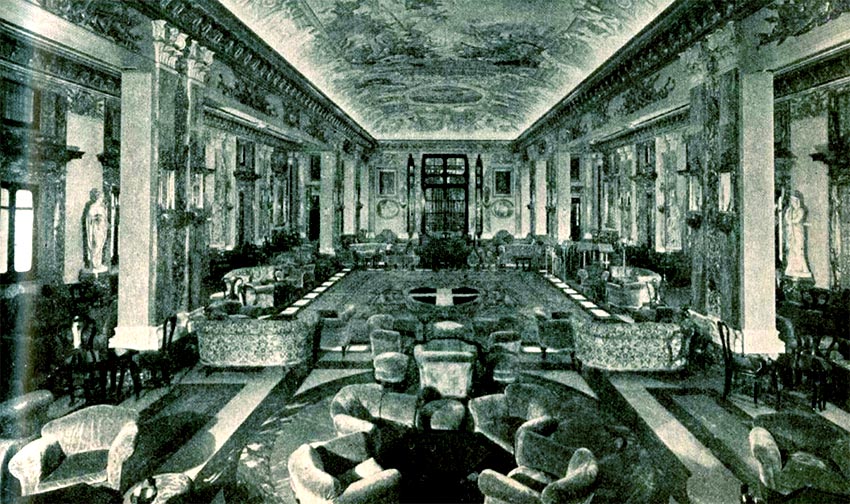
The design work of the Copppedè brothers marked the end of the era of the“old-fashioned” over the top baroque passenger ship interiors. Already during the same period, interior architects like Gustavo Pulitzer presented their more modernist designs.
